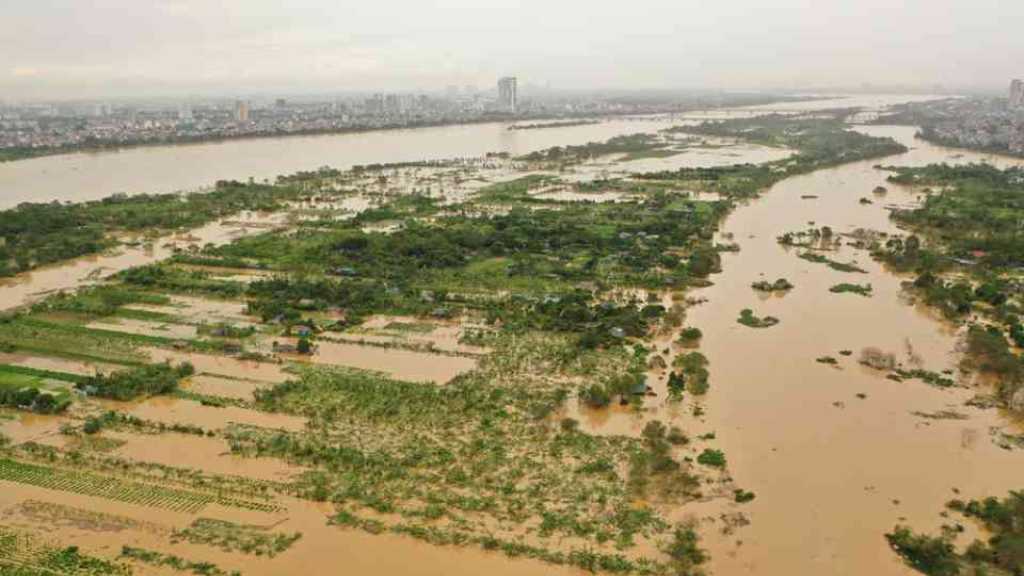Japan’s Okinawa Islands Brace for Return of Typhoon Khanun

By Staff, Agencies
Typhoon Khanun weakened slightly and hovered in the East China Sea on Friday, but it is still expected to approach Japan's Okinawa islands again, and even head for the main islands, making it what forecasters said was a "very unusual storm."
Khanun, which means "jackfruit" in Thai, has killed two people and currently has sustained winds of 126 kph [78 mph], with gusts up to 180 kph, the Japan Meteorological Agency said.
The typhoon was almost stationary on Friday, as it has been for well over 12 hours, the agency said.
Situated about 270 km [168 miles] north-northwest of Okinawa's Miyako Island as of 7 a.m. [2200 GMT], Khanun is forecast to make a sudden, sharp turn to the east on Friday evening and start heading north toward Japan's main islands.
Typhoons moving from west to east are not unusual, but forecasters said Khanun was different.
"I'm always watching the movement of storms, but the way this one is acting is very unusual," said Miho Oda, a forecaster with the Japan Weather Association.
"Summer typhoons move in a very complicated way, but even given that, this one is very strange. The fact that it's returning the way it came is really not usual."
Khanun's movements have mainly been determined by the presence of high pressure systems, with the storm first moving west along the edge of one strong system covering most of Japan – which has sizzled at near-record heat.
While this weakened slightly, other systems blocked movements to the west and the north, resulting in the storm stalling until it finally began turning east around noon on Friday, she added.
Another unusual feature of Khanun is that it is predicted to strengthen slightly as it moves north towards Japan, where cooler seawaters tend to weaken storms.
Oda said that while water temperatures around Okinawa are fairly normal, the temperatures surrounding Japan's four main islands are ranging from 1 to 5 degrees higher than usual.
Mie University professor Yoshihiro Tachibana, who termed Khanun "abnormal," said changes in westerly winds and warm waters kept the storm strong and contributed to its slowness.
"A simple explanation is the temperature of seawater is high - and one reason for that is global warming," he told TV Asahi.
But an official at the Japan Meteorological Agency said each storm is unique and it's hard to say how unusual Kanun may be.
"It is true that the temperature of the sea water is 1 to 2 degrees above normal, but I don't think we can attribute everything to climate change," he added, declining to be named in line with agency policy.
In northern Taiwan, land warnings were lifted on Friday and businesses and schools that were shut on Thursday due to the typhoon reopened. In the capital Taipei, more than 200 trees and street signs were downed, but no major damage was reported.
Authorities, however, were on high alert for more heavy rain to be dumped in the wake of the typhoon over the weekend in central and southern Taiwan, where close to a half meter of rainfall has been recorded.
Comments
- Related News

Typhoon Yagi: More than 140 Dead in Vietnam
2 months ago


